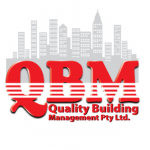Legislation is in place that stipulates all but a single residential property must become compliant with the new regulation by 1 July 2009 or risk being fined for non compliance. That’s why fire safety surveys are so important.
You must have evacuation diagrams and procedures in place at your premises. These will identify escape routes and evacuation points for your building and there may also be an Emergency Control Organisation (ECO), for the building.
If you haven’t had a fire safety survey undertaken at your building, then call QBM now on 1300 880 466 and we will work with you to get this done as soon as possible.
QBM are the professionals that will ensure your building evacuation diagrams, plans and procedures along with fire safety surveys are all up to date and legally compliant.
Don’t get burnt by changes to legislation.
As a result of the Regulatory Impact Statement in 2007 changes to the Building Fire Safety Regulations have a strong focus on individual education. Ranging from the training of qualified Fire Safety Advisers to the provision of detailed evacuation plans for individual tenants. These new requirements will definitely mean commercial and residential properties will have to update current Fire Safety procedures and training. The only real way to stay on top of this is through fire safety survey.
The major new requirements are:
An improved fire and evacuation framework that includes;
- The changes apply to all buildings including unit complexes
- High occupancy buildings
- Relevant approval documents be obtained and kept with the fire and evacuation plan
- The entity responsible for the whole building (e.g. strata manager or building manager) ensure that evacuation arrangements for the whole building are integrated with those of all tenants or residents
- Building fire safety plans must be developed training of all occupants must be conducted annually
- Critical defects in fire safety installations are reported to the occupier and that they be repaired within 1 month
Evacuation plans
Evacuation plans must be or include the following;
- Building specific
- Reviewed annually
- Details of the persons responsible for developing, changing and reviewing the plan
- The name of the fire safety adviser (if applicable) for the building
Serious consequences for inaction!
Harsh penalties apply to owners/occupiers who do not abide by the regulations. Far more serious, however, is the possibility of loss of life, combined with the destruction of property. Inaction would truly be an avoidable tragedy if fire safety surveys were undertaken in the beginning.
The solution is simple
QBM will evaluate and customise an Emergency Management Plan for your building or workplace. Eliminate the stress and worry of keeping up to date with current legislation, as our Fire Safety Adviser can take on the roles and responsibilities for your building:
- Annual fire safety training
- Annual fire safety audit of fire safety installations including the Emergency Management Plan & Diagram
- Development and Implementation of an Emergency Management Plan
- Drawing and printing of evacuation diagrams orientated to specific exit points and locations
Once you’re fire safety compliant, QBM recommends you…
- Keep the Fire and Evacuation Plan (FEP) in a safe place on site. Inside a filing cabinet is an appropriate location as long as it can be assessed to show the Fire and Rescue Service when they conduct and audit of the building.
- Keep a copy of the Fire and Evacuation Plan in a safe place on site.
- Make the FEP available to every owner and tenant on the site to ensure they are aware of the procedures to take during an emergency.
- Develop an induction program for all contractors who may work within your building and have them sign a register stating that they clearly understand all emergency procedures. If your building is small, under 50 lots, then this would generally not be required.
- Undertake training programs for owners and tenants as follows:
- First Response Fire Equipment training – General evacuation instructions
- Undertake an evacuation practice every 12 months.
- Complete the Occupier’s Statement every 12 months and submit to the Fire and Rescue Service.
- Install a copy of the building’s Certificate of Classification at the front entrance of the building.
- Ensure the evacuation diagrams are installed in the correct location.
- Schedule an annual review of the FEP and conduct appropriate training of
Contact Quality Building Management today to organize your Fire Safety Survey.

